Even today, paints made with lead are still used in many residential and commercial buildings. In the United States, approximately 11 million homes or apartments had a lead paint disclosure made on their doors and windows between 1979 and 2001. According to the CDC, before the 1990s, most people knew nothing about the dangers of lead exposure.
A lead paint disclosure can help identify the presence of lead dust or chips in a home. Lead dust or chips can pose a health risk to anyone who spends time in the home, especially children under six years old.
Table of Contents
What is a lead paint disclosure?

A lead paint disclosure is a form that landlords or homeowners must provide to potential buyers or tenants when applying for or renting out residential properties built before 1978. The form describes how often children are likely to be exposed to lead-based paint and must show that the risk of injury is small enough not to warrant additional precautions such as those included in an adult-safe environment disclosure statement. The US Consumer Product Safety Commission banned lead-based paint in 1977, so these properties are common today only if they were built before this time.
Lead Paint Disclosure Templates
Ensure compliance and protect both buyers and sellers with our comprehensive Lead Paint Disclosure Templates. These templates provide a convenient and legally compliant way to disclose information about lead-based paint in residential properties. Whether you’re a real estate agent, property owner, or landlord, our templates make it easy to fulfill your obligations and provide accurate information to potential buyers or tenants.
With clear and concise language, these templates outline the presence of lead-based paint, disclose any known hazards, and inform parties about their rights and responsibilities. Customize the templates with property-specific details, including relevant dates and signatures, to create a professional and reliable disclosure document.
By using our Lead Paint Disclosure Templates, you can demonstrate your commitment to transparency, compliance, and ensuring the safety of all parties involved. Don’t leave anything to chance when it comes to lead-based paint disclosure—use our templates to streamline the process and protect everyone involved in the transaction.
The Lead Paint Disclosure Rules
- They must provide written notice of lead paint hazards to prospective buyers, tenants, and their agents. The notice must be provided in an accessible format (i.e., Braille or large print) that is specific to the type of property being sold or leased, including any condition or restriction on occupancy or use of the premises and any other relevant information.
- They must conduct a health inspection of units by certified environmental health specialists to determine if lead-based paint hazards are present. If so, they must provide written notification to all affected individuals (e.g., prospective renters).
- They must promptly provide copies of all notifications sent to affected individuals (within 90 days of receiving them), along with any corrective measures implemented by the owner/seller/landlord that has eliminated the identified hazard(s).
- They must ensure that sellers complete all disclosures before signing a contract for sale or lease and provide each party with copies for its records. The landlord must keep records of the information provided on the lead paint disclosure form for five years from when it was issued.
Lead paint disclosure guidelines for sellers and lessors
As a landlord with a property built before 1978, you are responsible for disclosing information regarding the presence of lead paint to potential tenants. The most recent laws require landlords to disclose the use of lead paint in the home through a federal lead disclosure form and take actions such as performing inspections on their property when necessary. Most states also have similar regulations for landlords.
1. A copy of the current EPA Lead Disclosure Form (form EPA-854)
2. A copy of the “lead hazard information” brochure published by the EPA (available at www.epa.gov/lead)
3. An explanation of how tenants can obtain more information about lead hazards in their homes if they want to do their own home inspection (e.g., contact an environmental professional or city department).
4. The name and address of the owner or manager of the property.
5. The physical address of the property.
6. A statement that lead-based paint was used in residential buildings on site prior to 1978 and is not being used.
7. A statement that tenants are not required to do any lead hazard evaluation or remediation work unless they obtain a waiver from their landlord.
Lead paint disclosure requirements and exemptions
According to the Environmental Protection Agency, here are the steps landlords must take as a landlord to ensure they comply with the law:
1. Inspect for lead-based paint hazards on all interior surfaces and exterior surfaces of your rental properties within 30 days of acquiring it. If you discover any conditions that pose health risks or material damage, you should immediately notify your local health department.
2. When inspecting a property, you should use a certified inspector who is trained in lead-based paint inspection methods, who has no financial ties to either you or the seller, and who knows how to properly evaluate potential hazards related to lead poisoning without causing more harm than good by removing potential sources of contamination such as peeling paint or deteriorated chimneys where children may play in order to avoid lead dust exposure.
3. If your inspection reveals any conditions that pose health risks or material damage from lead poisoning, then you must follow up by sending one certified letter within 30 days after discovering those conditions.
Issuing a Lead-Paint Disclosure
The National Lead Information Center (NLIC) explains, “The law requires sellers of housing built before 1978 to provide prospective buyers with information about lead-based paint and/or lead-based paint hazards that may exist in the property.”
The law also states that the seller will not be required to obtain any certification or training in order to comply with this requirement. However, they need to understand their responsibilities as well as their rights under this program.
The program’s purpose is to protect buyers from exposure to lead dust and paint chips, which can cause health problems in children.
Buyers must be told if a house was built before 1978, even if they’re not buying the home to live in it. Homes built before 1978 are more likely to have lead paint on them, but there’s no way to know for sure without testing. The disclosure form includes a list of possible sources of lead in your house, such as:
- Leaded gasoline
- Lead-painted toys and furniture.
- Lead-glazed pottery and ceramics
- Leaded crystal glassware
Your state may have additional laws about disclosures about lead hazards in your home or apartment. Check with your local housing department and urban development office for more information about requirements where you live.
FAQs
What is a Lead-Based Paint Disclosure?
A Lead-Based Paint Disclosure is a document that informs potential buyers or renters of a property about any known presence of lead-based paint or lead-based paint hazards in the property.
Why is Lead-Based Paint Disclosure important?
Lead exposure can be harmful, especially to young children and pregnant women. Disclosure is crucial to inform potential occupants of the risks and allow them to make informed decisions.
When is a Lead-Based Paint Disclosure required?
Disclosure is required before the sale or lease of residential properties built before 1978 in the United States, as lead-based paint was commonly used before being banned that year.
What information is included in a Lead-Based Paint Disclosure?
The disclosure includes any known information about the presence of lead-based paint or lead-based paint hazards, records of lead inspections or abatements, and an acknowledgment from the buyer or tenant that they received the information.
Who is responsible for providing a Lead-Based Paint Disclosure?
It’s the responsibility of the property seller or landlord to provide the disclosure to potential buyers or tenants.
Are there penalties for failing to provide Lead-Based Paint Disclosure?
Yes, failing to provide required disclosure can result in significant penalties, including fines, under federal law and possibly state law.
Can a property transaction proceed without a Lead-Based Paint Disclosure?
In the United States, federal law mandates the disclosure for pre-1978 properties, so transactions should not proceed without it to remain compliant with the law.
Can I waive my right to a Lead-Based Paint Disclosure?
While it’s generally not advisable to waive your right to such important information, the specifics around waiving such rights may vary by jurisdiction. It’s advisable to consult with legal counsel in such situations.
How can I check for lead-based paint if the seller or landlord does not have existing records?
You can hire certified professionals to conduct a lead-based paint inspection or risk assessment to determine the presence and condition of lead-based paint in the property.
What should I do if I find lead-based paint in a property after purchasing or leasing it?
It’s advisable to have a certified lead abatement contractor address the issue to minimize exposure risks. In some cases, legal recourse may be available if the seller or landlord did not provide required disclosure.








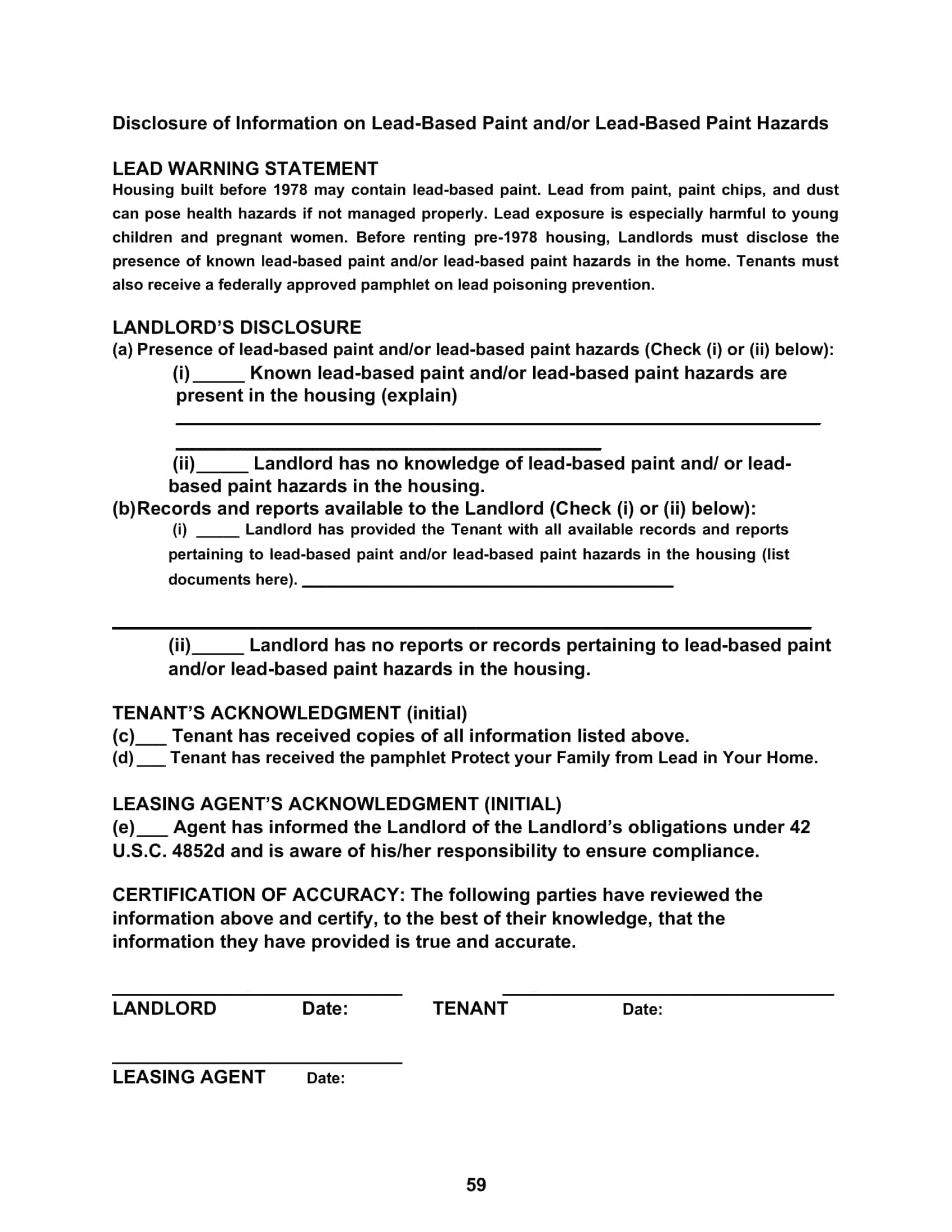



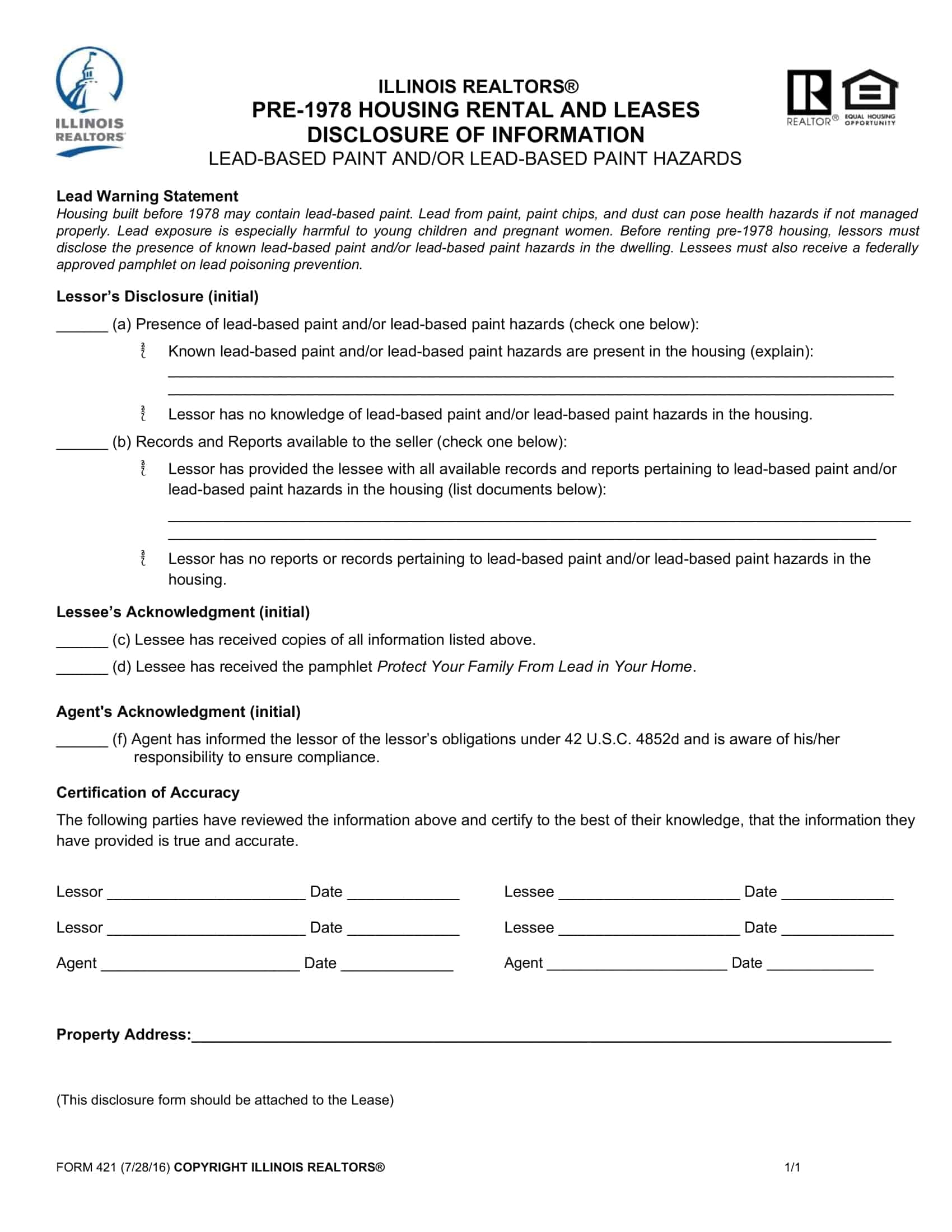




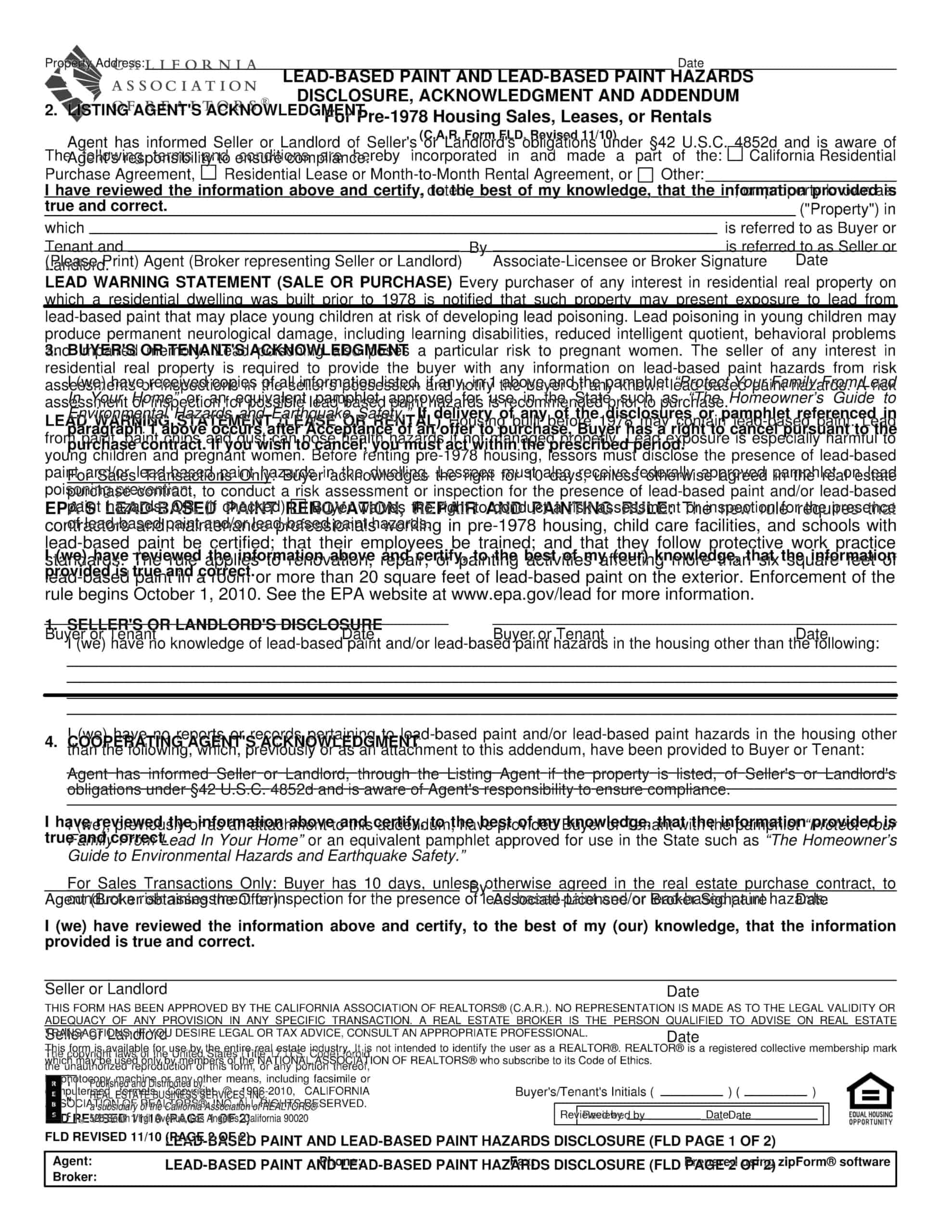


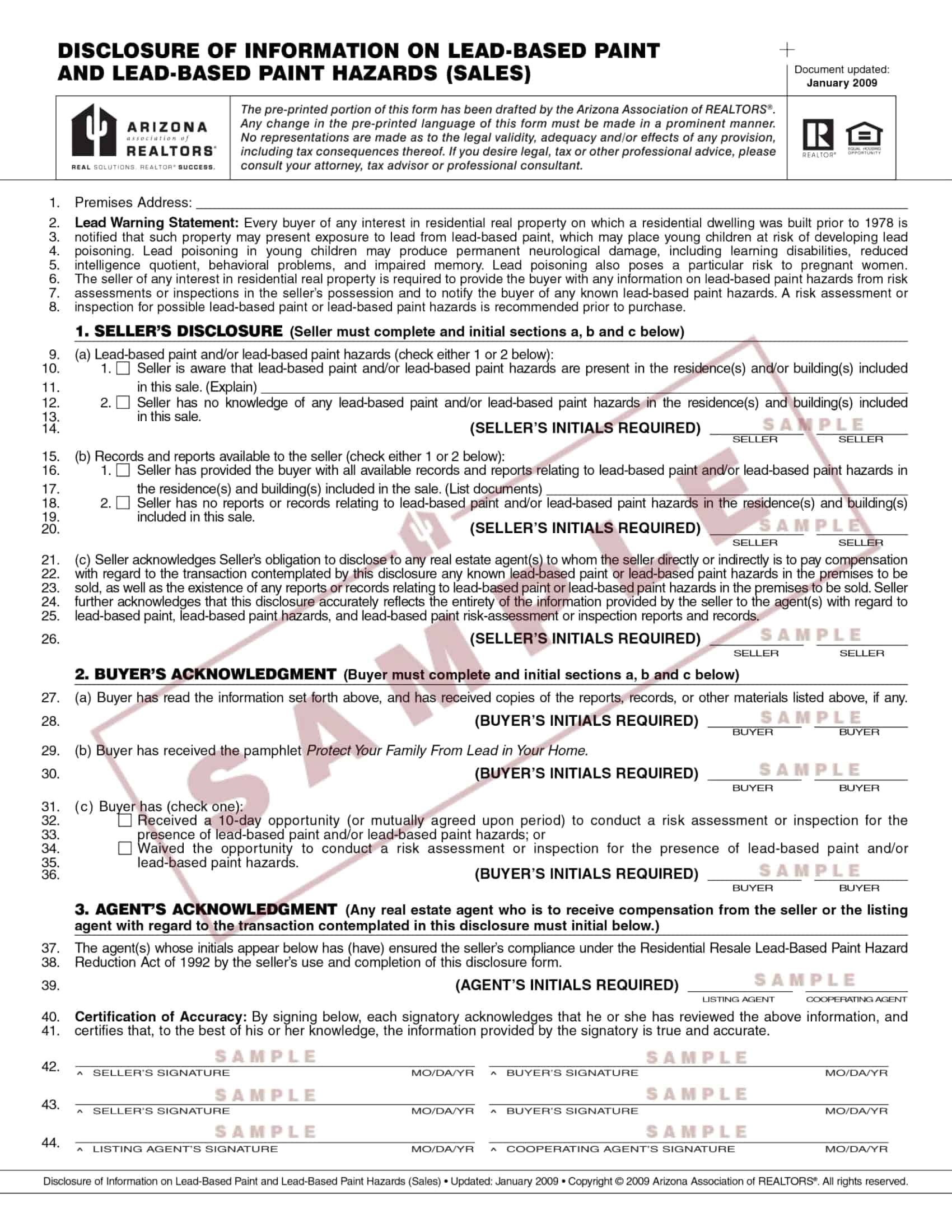













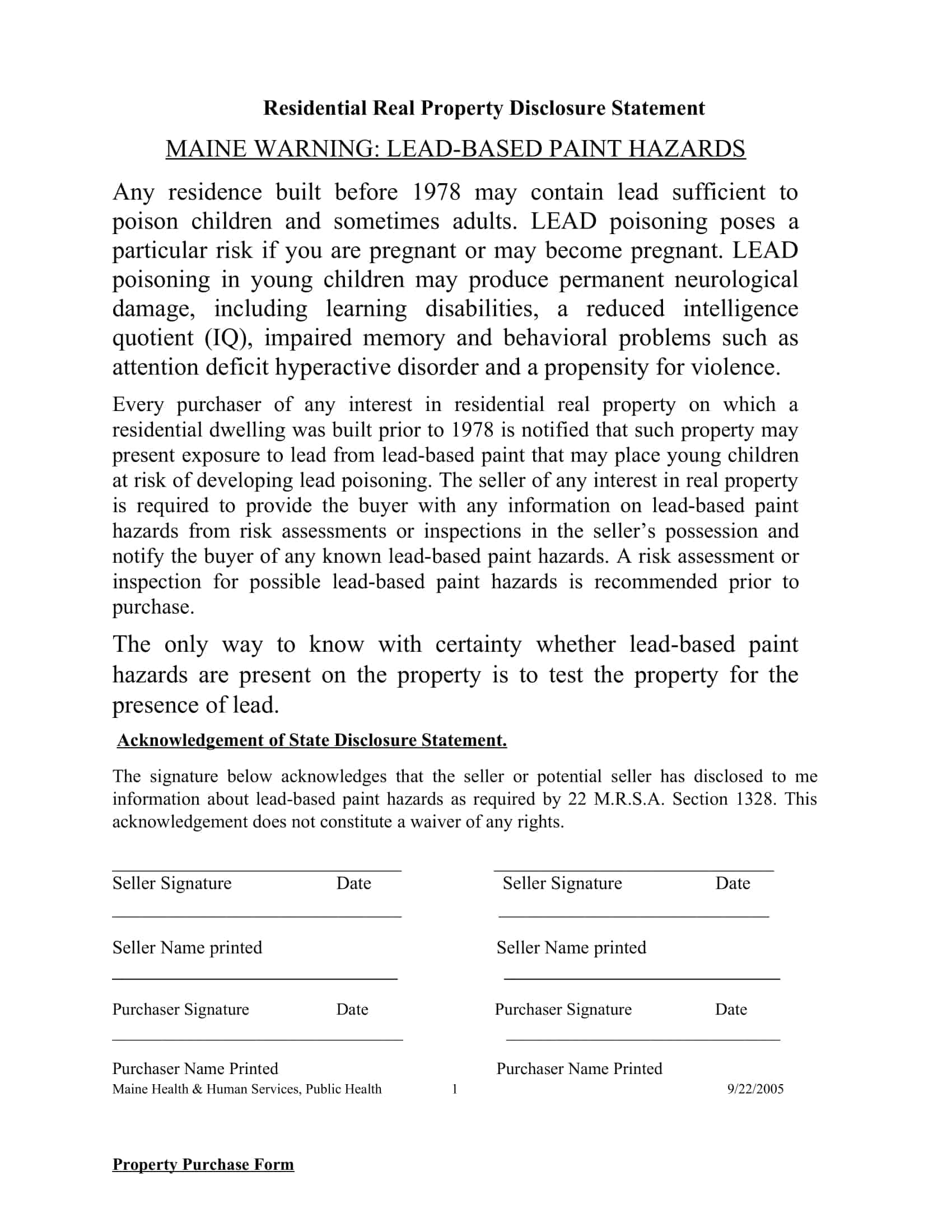





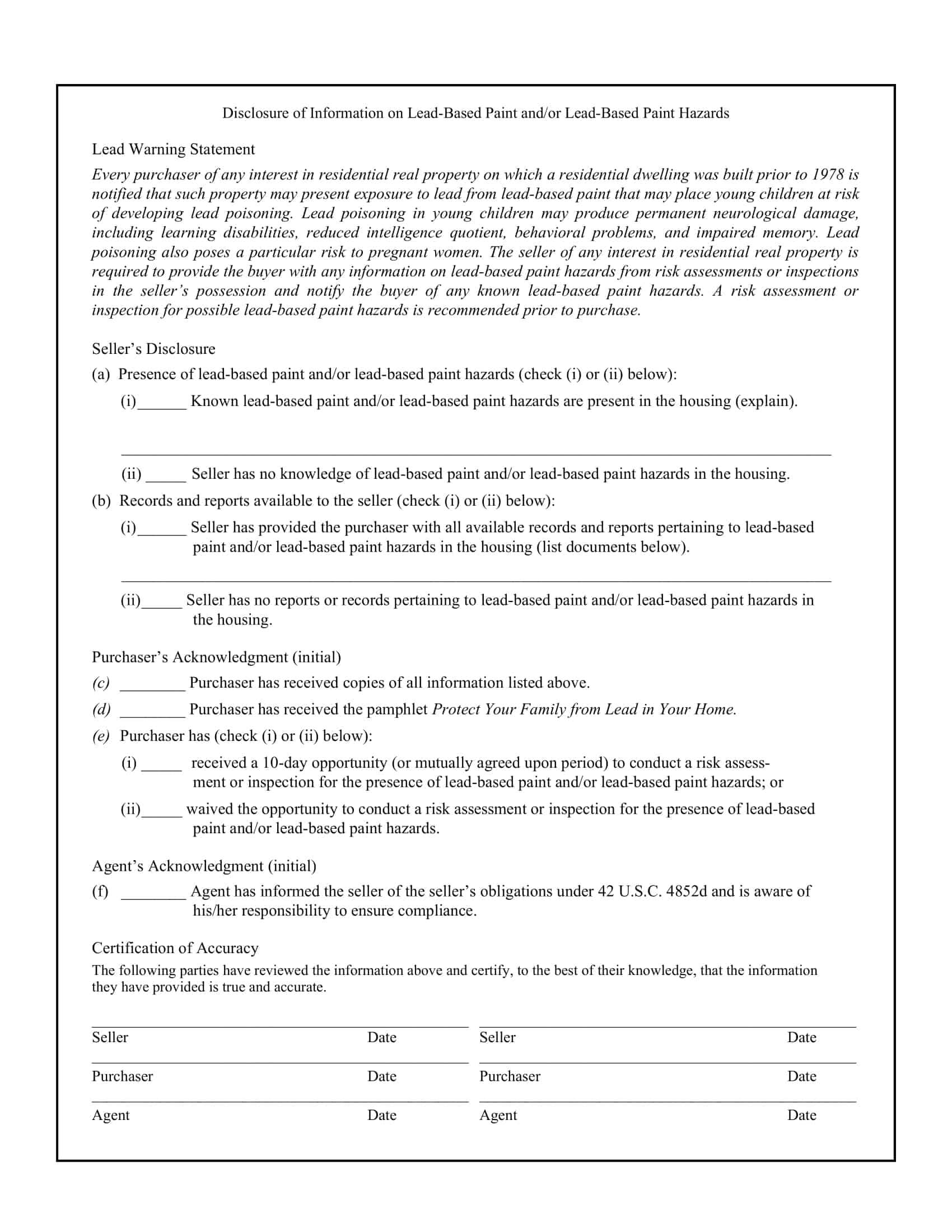



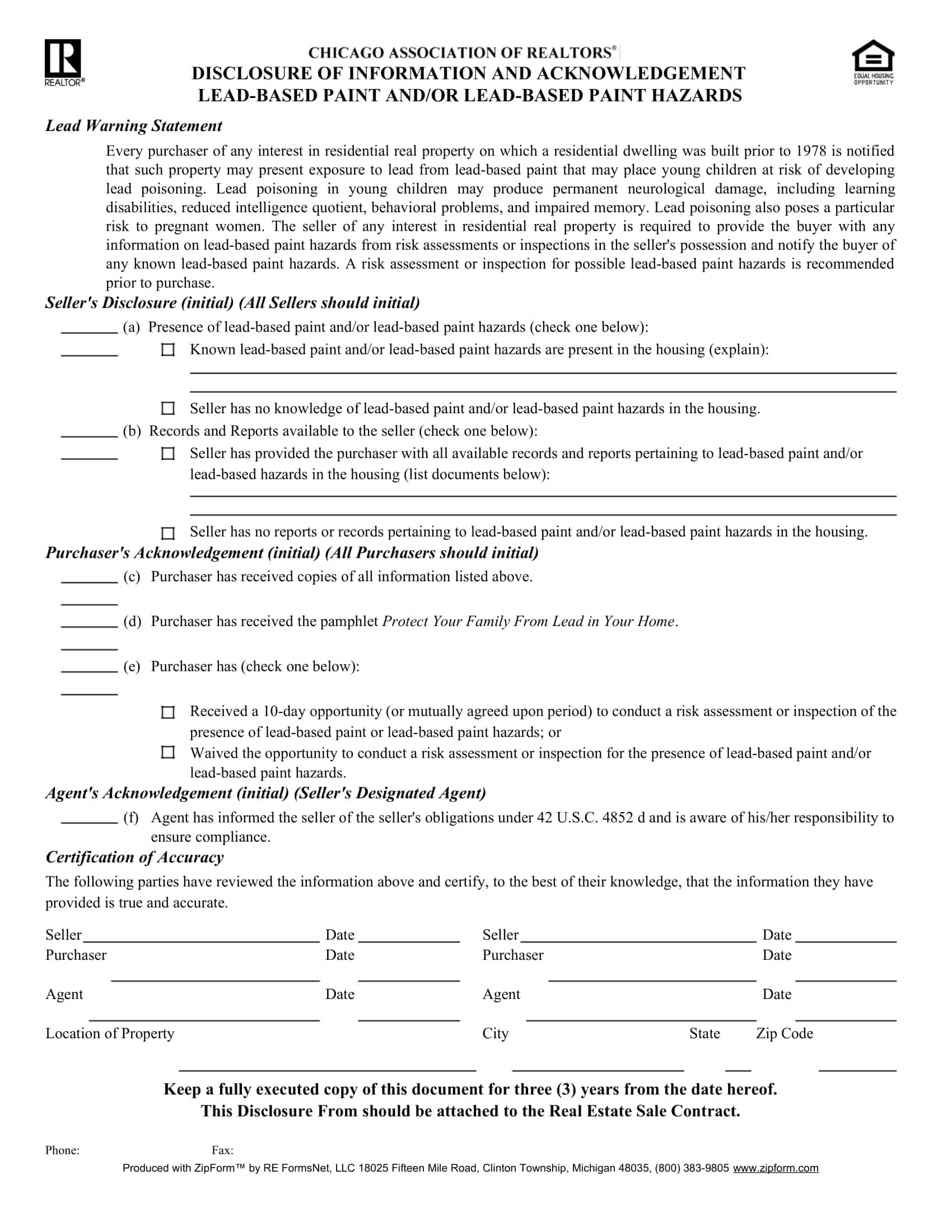








![Free Printable Roommate Agreement Templates [Word, PDF] 1 Roommate Agreement](https://www.typecalendar.com/wp-content/uploads/2023/06/Roommate-Agreement-150x150.jpg)
![Free Printable Credit Card Authorization Form Templates [PDF, Word, Excel] 2 Credit Card Authorization Form](https://www.typecalendar.com/wp-content/uploads/2023/06/Credit-Card-Authorization-Form-150x150.jpg)
![Free Printable Stock Ledger Templates [Excel,PDF, Word] 3 Stock Ledger](https://www.typecalendar.com/wp-content/uploads/2023/08/Stock-Ledger-150x150.jpg)
